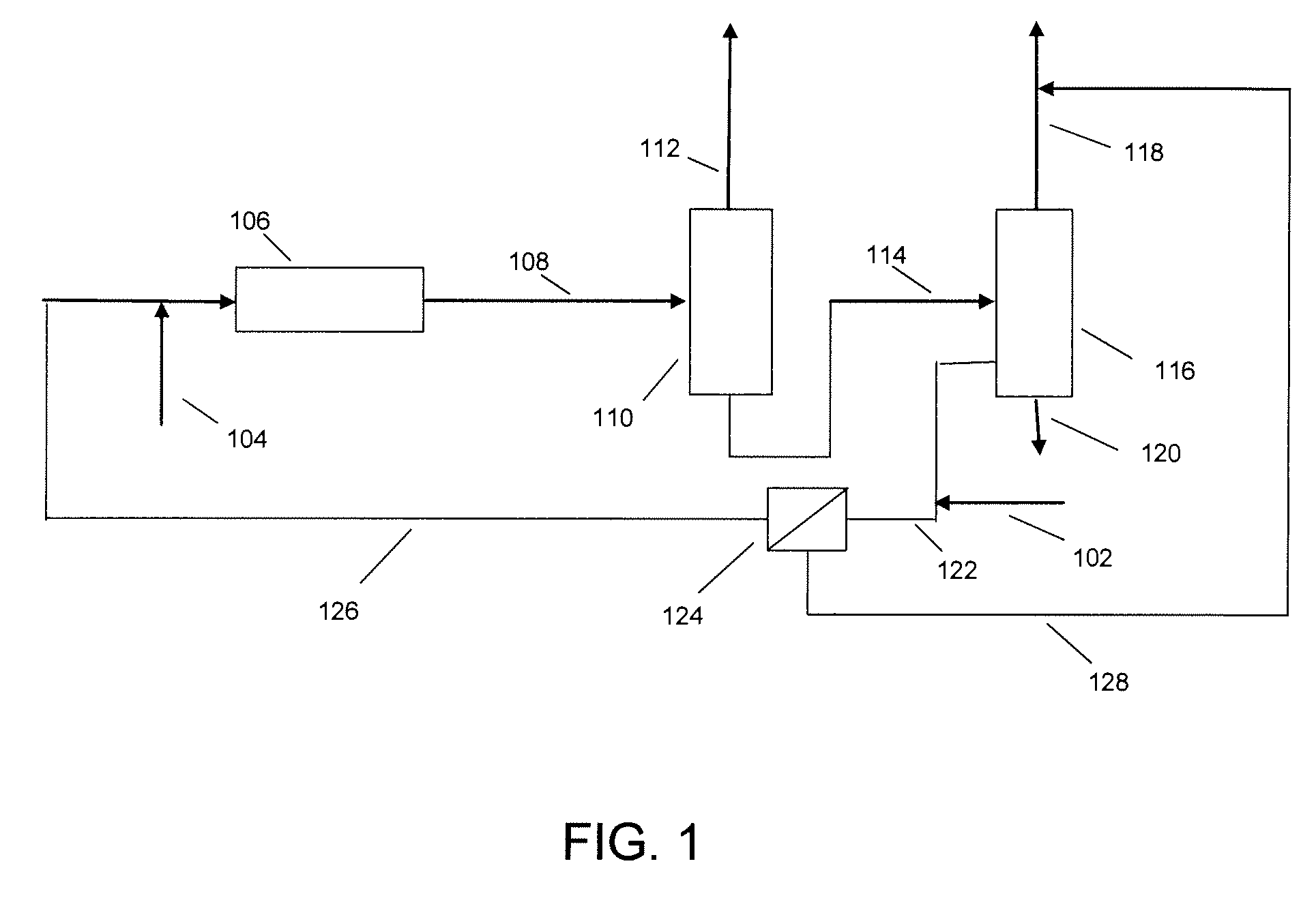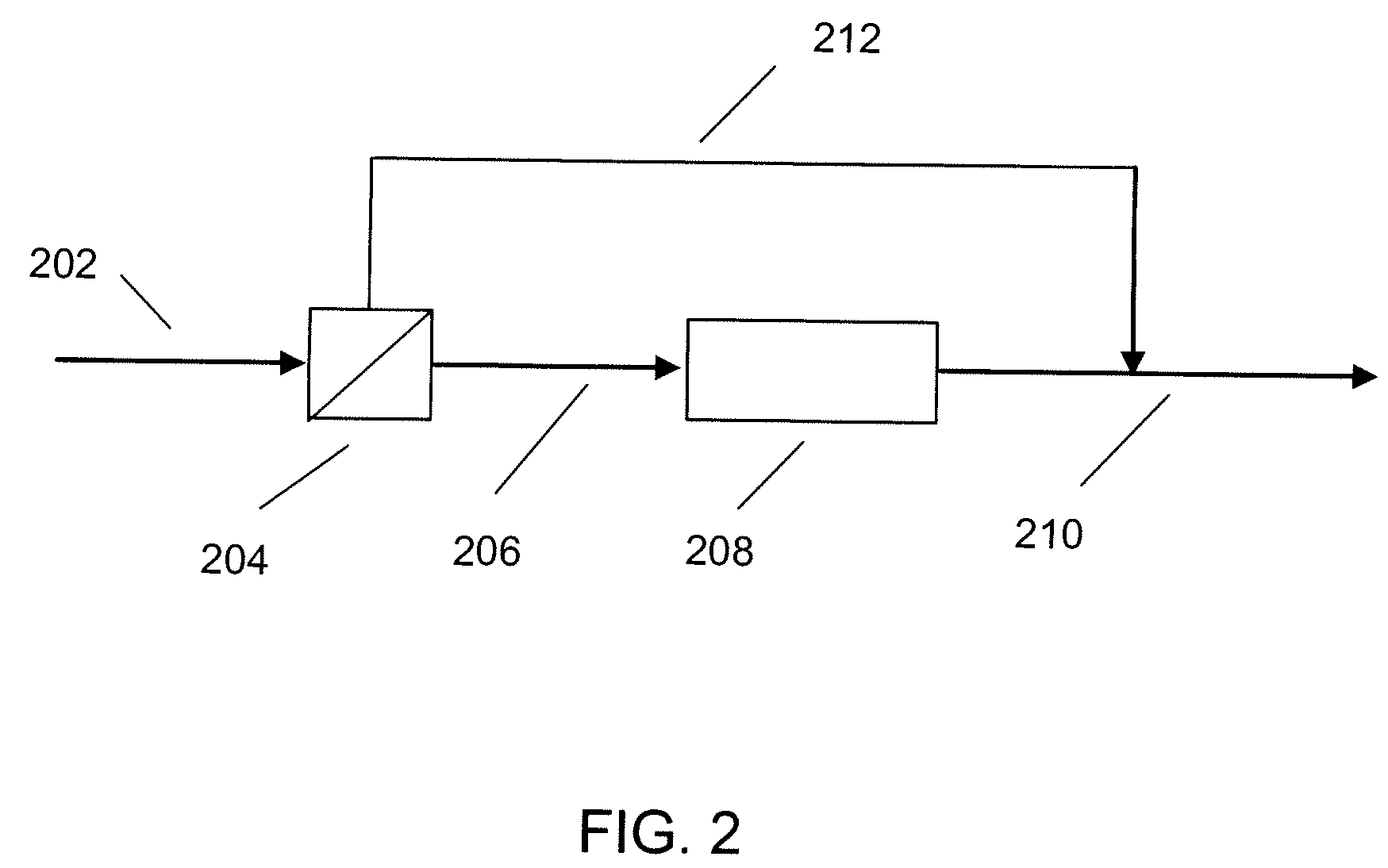Processes for the Isomerization of Normal Butane to Isobutane
- Summary
- Abstract
- Description
- Claims
- Application Information
AI Technical Summary
Benefits of technology
Problems solved by technology
Method used
Image
Examples
Embodiment Construction
[0038]Any suitable normal butane-containing feedstock may be used in the processes of this invention. The feedstock may be obtained from any suitable source including, but not limited to fractionation or liquefaction of gaseous or normally liquid petroleum stocks, from synthetic paraffins such as from Fischer-Tropsch processes, cracking of higher molecular weight hydrocarbons and the like. The composition of the feedstock will depend upon the source of the feedstock. The preferred feedstocks will contain at least 30, say, 50 to essentially 100, mass-% normal butane. Other components that may be present include isobutane, butenes, and lighter and heavier hydrocarbons. Generally, lighter hydrocarbons are present in less than 20, preferably less than 5, mass-% and heavier hydrocarbons are present in amounts less than 10, preferably less than 5, mass-%. In the event that the feedstock contains C5 or heavier hydrocarbons, it is usually preferred that the feedstock be subject...
PUM
 Login to View More
Login to View More Abstract
Description
Claims
Application Information
 Login to View More
Login to View More - R&D
- Intellectual Property
- Life Sciences
- Materials
- Tech Scout
- Unparalleled Data Quality
- Higher Quality Content
- 60% Fewer Hallucinations
Browse by: Latest US Patents, China's latest patents, Technical Efficacy Thesaurus, Application Domain, Technology Topic, Popular Technical Reports.
© 2025 PatSnap. All rights reserved.Legal|Privacy policy|Modern Slavery Act Transparency Statement|Sitemap|About US| Contact US: help@patsnap.com



